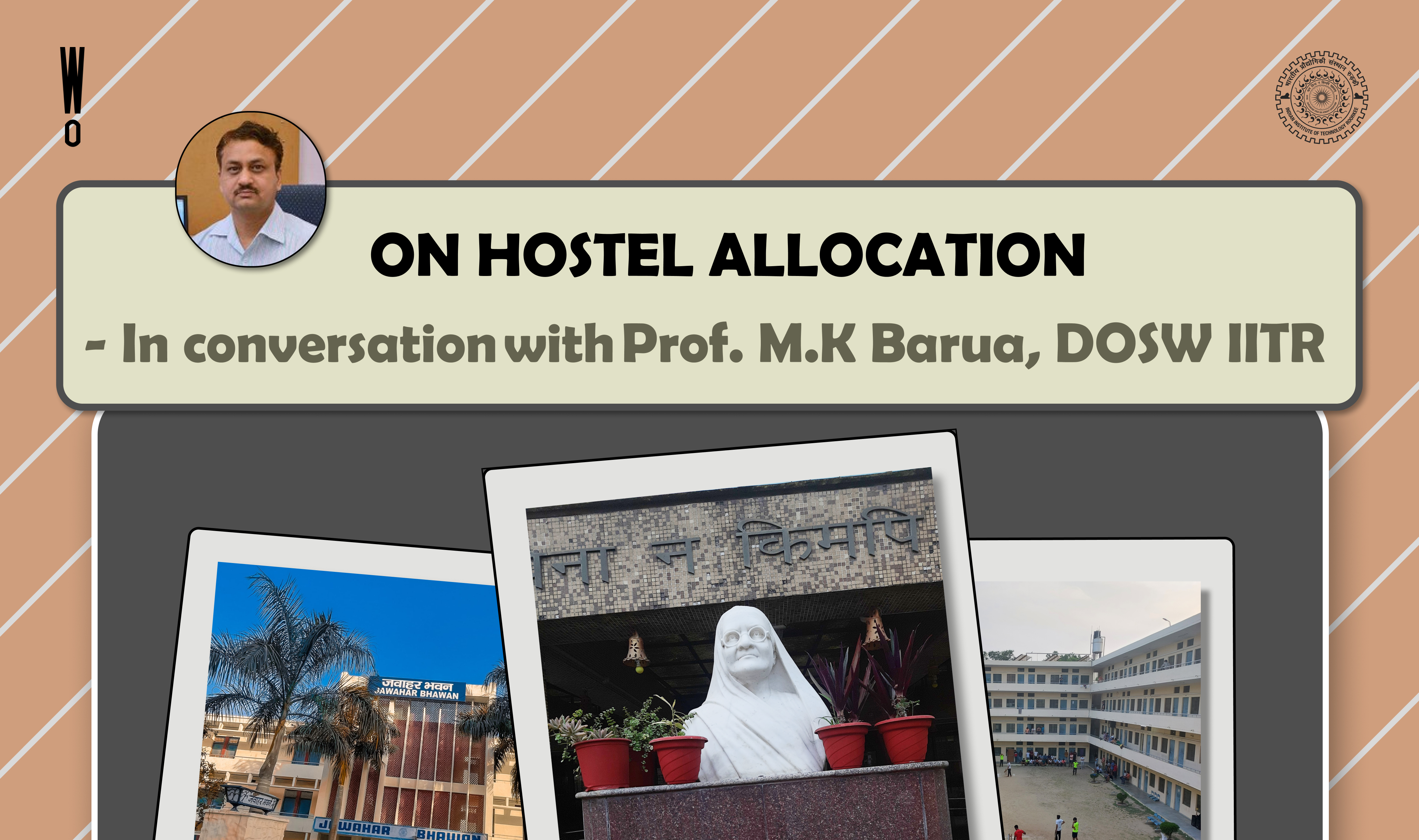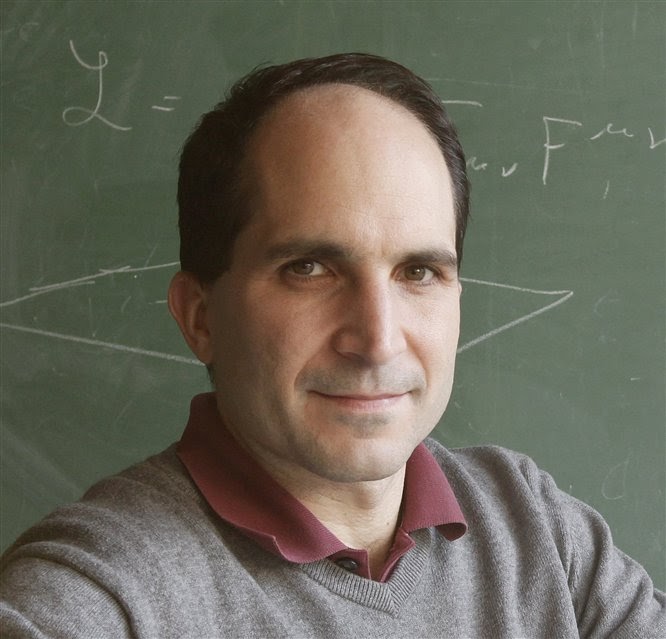

Body of IITR

Juan Martín Maldacena is a theoretical physicist and the Carl P. Feinberg Professor in the School of Natural Sciences at the Institute for Advanced Study. He obtained his licenciatura (a 6-year degree) in 1991 at the Instituto Balseiro, Bariloche, Argentina and his Ph.D. in physics at Princeton University after completing a doctoral dissertation titled “Black holes in string theory”. He has made significant contributions to the foundations of string theory and quantum gravity. His most famous discovery is the AdS/CFT correspondence, a realization of the holographic principle in string theory. On 21st November 2020, Prof. Maldacena was invited by the Institute Lecture Series Committee,IITR to deliver a webinar lecture as part of the “The Mysteries of Universe” lecture series . The topic of the lecture was “Black holes and the structure of spacetime”. Watch Out! had the chance to interview him and find out more about his thoughts on theoretical physics and his experiences in this field.
Watch Out!: Can you give us a sense of what it is like to be a graduate student in physics in the 1990s? What plans did you have when coming to Princeton University?
Prof. Juan Maldacena: When I started in 1992, there was excitement about the prospects for the SSC (Superconducting SuperCollider) which was being built in Texas. This was then cancelled and many theorists went from working on more phenomenological problems to more conceptual problems, such as the problem of quantum gravity. There had been a lot of progress in understanding two dimensional conformal field theories, and also string theory in two or less dimensions. Some people started to apply some of these mathematical techniques to problems in other fields, such as condensed matter, and I briefly worked in that direction. Then I switched to working on black holes, and finding interesting classical black hole solutions in the gravity theories that arise from string theory. This was motivated by interesting papers by Ashoke Sen. When I came to Princeton, my plan was to do a PhD in particle physics or string theory.
Watch Out!: What is the status of the Black Hole Information Paradox and what purpose will it serve in future research?
Prof. Juan Maldacena: I have not been completely solved. For me a complete solution would involve understanding the black hole singularity. And this was not done yet. But important progress was made during the years. For example, now there is more convincing evidence that the information does come out. First through string theory constructions, the microscopic accounting of black hole entropy, and the duality between gravity and quantum field theories at the boundary. And very recently, there is also evidence for this by computations of the entropy of Hawking radiation using the replica trick and the gravitational path integral.
Watch Out!: String theory has led to insights in many allied fields, including mathematics and condensed matter physics. Do you think there will be other areas of research where string theory could throw some light soon?
Prof. Juan Maldacena: I suspect that the holographic dualities might shed some light into machine learning. Or perhaps the other way around!
Watch Out!: What inspired you to pursue theoretical physics? At what age did you know that this was what you wanted to do? If you weren’t a theoretical physicist, what do you think you would be doing?
Prof. Juan Maldacena: When I was growing up and up to high school, I was interested in technology and exploring how various appliances work. This led me to be interested in the laws of physics, and I decided to study physics at the university to see what this was like, and what doing research was like. I also got interested in mathematics and that led me to focus more on theory.
Watch Out!: Your AdS/CFT correspondence paper has been cited 20,000 times. What motivated you to work on the same? And for our readers, can you try to explain the Duality in layman terms?
Prof. Juan Maldacena: At the time I was doing research on the connection between black holes and string theory. In particular, there are some soliton-like solutions of string theory called D-branes. These are objects that are on the verge of becoming black holes and by thinking about them I was led to the AdS/CFT correspondence. This came from the idea that two possible descriptions of these soliton-like solutions are the same, one is the description as a place in spacetime where light quantum fields live, and the other is in terms of a black hole (or black brane) solution. The AdS/CFT correspondence is the conjecture that these two descriptions are the same. At the time I thought it was an interesting result, comparable to other dualities that people had found in string theory, such as Matrix theory, etc. Later research showed that it could be applied to analyze a large variety of problems, ranging from problems in nuclear matter to condensed matter physics. Of course, at the time I had no idea about these possible applications, and they came as a surprise to me.
Watch Out!: Is the string theory our only hope at present to lead to a unified theory? What is your view on, e.g., Loop Quantum Gravity?
Prof. Juan Maldacena: We should think of string theory as a theory under construction. It had success as a perturbative theory of quantum gravity, leading to relativistic formulas for the scattering of gravitons which are (ultraviolet) finite at any order in perturbation theory. This is something that no other theory has achieved. String theory can also incorporate the parity breaking gauge theory interactions of the Standard Model without any inconsistencies. In addition, in string theory one can give a statistical accounting for the entropy of black holes, which not only agrees with the Hawking-Bekenstein but it also correctly accounts for its quantum corrections. Furthermore, in string theory we can give a full description for certain spacetimes: some high dimensional flat spaces and some negatively curved spacetimes. For all these reasons, string theory is a very interesting candidate for a theory of quantum gravity. Many problems remain. The description of expanding universes, such as de-Sitter, or our own cosmology, remain hard to describe in string theory, the constructions leading to such solutions are more technically challenging and they are not understood beyond the leading order in perturbation theory. Also, important singularities, such as the black hole singularity or the cosmological singularity have not yet been understood.
Watch Out!: What drives the scientific pursuit on a personal level for scientists? Is it curiosity and intellectual challenge, or does it include the urge to be remembered?
Prof. Juan Maldacena: I think that curiosity and the intellectual challenge are important motivations. The desire to explore the unknown and to go beyond where others have gone.
Watch Out!: Science will surely outlast humankind, but what do you think would be the next ‘holy grail’ of science once we reach the ‘theory of everything’? And do you see it happening anytime soon?
Prof. Juan Maldacena: I don’t particularly like the phrase “theory of everything”. I prefer “a quantum theory of spacetime” or “quantum gravity”. Of course, any such theory has to incorporate the other forces of nature, and include a theory of matter, since the geometry of spacetime is connected to matter via the Einstein equations. For this reason any theory of quantum gravity has to incorporate “everything’’ that exists in the universe. I think that such a theory is probably within reach, but there are significant obstacles that should be overcome. But there are many very ingenious people working on it, so I hope that these obstacles will be overcome.
Watch Out!: A number of research oriented institutes have been established in India. What other efforts according to you should be made to popularize science in India?
Prof. Juan Maldacena: I think it is important to communicate science to the general public, but I do not know what the most effective methods are. Now, some people are producing excellent online videos where various concepts are explained. I would have loved to watch them when I was growing up.
Watch Out!: What has been the effect of COVID-19 pandemic on your research work? Do you think moving into the future, the curriculum of universities will gravitate towards the available online modes?
Prof. Juan Maldacena: As theorists, we were not disrupted in a very significant way. It has forced us to move several activities online. I think that various online conferences and seminars have been very successful. Yes, I think that online activities will play an important role in the future.